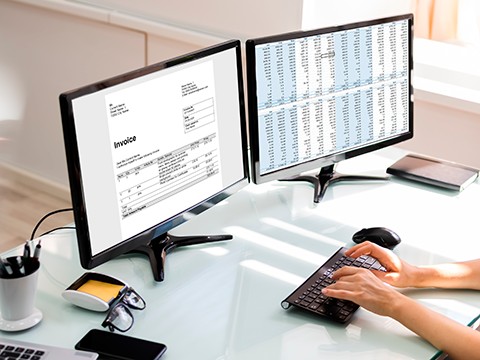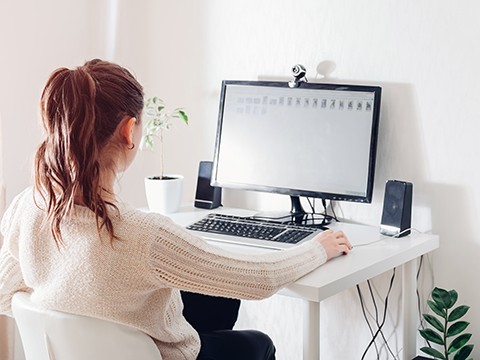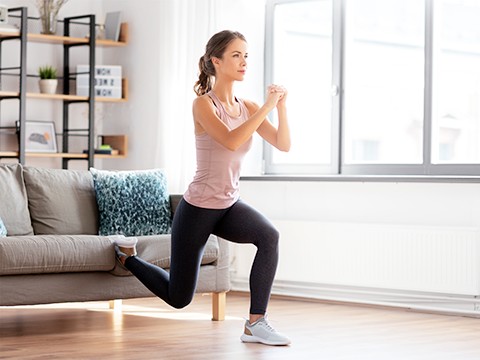Customer service
Our customer support is available every working day between 8am and 6pm.
5 Tips for Healthy Working at Home
Now, more than ever, it’s important to make your working hours at home, as healthy as possible.

1. Make Your Workplace an Office at Home
Working from the couch or even in bed? Instead of your lap, or a coffee table that’s far too low, the workstation should ideally be set up in a study or at least in a work area with its own desk.
The physical separation of work and private spaces helps to focus during working hours and to let go after work. The latter is a common problem when working from home.

2. A Healthy Sitting Position Relieves the Back
The power zone is sometimes known as the handshake zone. It’s the area you’d feel comfortable reaching out to in a handshake. Extending beyond this to reach for your mouse, or to reach up to shelves, for example, takes you out of the zone and reduces your ‘power.’

3. A Good Screen is Your Eyes' Best Friend
Convertibles and laptops are very useful, but by no means optimal for permanent work. The constant viewing of these, often too small and low-contrast, screens results in dry eyes that are more susceptible to infection as well as headaches and discomfort.
Instead, it's worth investing in a screen with a diagonal length of at least 22 inches. This is not only more comfortable when in a seated position, because of its height, but it also spares the eyes with generally higher contrast and less blue light. The website Digital Trends offers an overview of the best work-from-home tech.

When positioning the screen, it is recommended to set it up next to a window. A frontal view into the sunlight or reflecting daylight from the screen should be avoided, as both put more strain on the eyes.
Also recommended for dry eyes:
- Humidity in the room should be about 50 percent, for example by placing water bowls
- Avoid direct airflow, such as fans and air conditioning near the eyes
- Do not smoke in the work area
- Regular dusting

4. Don't Forget Your Breaks
In the office, getting coffee, talking to colleagues or heading to the canteen provide short breaks and therefore some relief for eyes and head. In the home office, on the other hand, many people spend their lunch break in front of the computer, or do not take any break at all. Efficient work, however, requires efficient regeneration.

Tips for breaks and relaxation in the home office:
- Always drink enough water, at least two litres a day
- Take time for breaks and, if possible, don't spend them in front of the computer
- Allow your eyes to take a break: Look out of the window briefly every ten minutes; consciously focus on objects at the edge of your vision; do visual exercises and let the pupils wander to the left and right and up and down
- Darkness and warmth are easy on the eyes. Put your hands briefly (without pressure) on your eyes several times a day and think of beautiful things like a holiday panorama, colourful flowers or your last outdoor adventure

5. Stay Active with Workouts and Exercise
Too little physical activity, in combination with sitting for too long, damages the blood circulation and the oxygen supply of the body. The intervertebral discs are put under above-average strain and muscles recede if not used, making it all the more important to move around. A daily run or walk in the fresh air helps. Your home or garden can become your gym.

During working hours, even small exercises at the desk can help, from stretching to circles of the head, hand, arm and shoulder and back rotations.
A yoga session in the morning ensures a healthy start to the day. Classic bodyweight exercises, such as push-ups, squats, sit-ups, planking or jumping jacks are perfect when taking a break or after work, as the perfect counterbalance to constant sitting.

